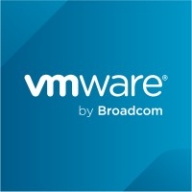

VMware Tanzu CloudHealth and CloudCheckr are competing in the cloud management space. VMware Tanzu CloudHealth offers robust customer service and cost management, appealing to cost-conscious users, while CloudCheckr stands out with its comprehensive feature set focusing on security and compliance.
Features: VMware Tanzu CloudHealth includes key features such as cost management and governance, cloud analytics, and resource optimization, particularly in multi-cloud environments. CloudCheckr provides strong cloud security, compliance, and automated best practice checks that enhance the management of cloud resources.
Room for Improvement: VMware Tanzu CloudHealth could enhance its focus on security and compliance, expand its automated best practice checks, and improve scalability in large cloud environments. CloudCheckr can develop its customer service, elaborate further on cost management strategies, and enhance its integration capabilities with various cloud platforms.
Ease of Deployment and Customer Service: VMware Tanzu CloudHealth allows smooth integration with existing systems, ensuring comprehensive customer support and facilitating quick deployment. CloudCheckr enables rapid deployment with a significant emphasis on security compliance during setup but does not match VMware in customer service quality.
Pricing and ROI: VMware Tanzu CloudHealth is known for competitive setup costs and delivering a strong ROI for users focused on cost efficiency and strategic cloud use. Although CloudCheckr may have higher initial fees, it provides valuable returns with its extensive feature offering, justifying the investment for those prioritizing comprehensive cloud management.
| Product | Market Share (%) |
|---|---|
| VMWare Tanzu CloudHealth | 1.9% |
| CloudCheckr | 1.3% |
| Other | 96.8% |


| Company Size | Count |
|---|---|
| Small Business | 2 |
| Midsize Enterprise | 1 |
| Large Enterprise | 5 |
| Company Size | Count |
|---|---|
| Small Business | 4 |
| Midsize Enterprise | 2 |
| Large Enterprise | 4 |
VMware Tanzu CloudHealth, formerly known as VMware Aria Cost Powered by CloudHealth, is a specialized cloud management platform tailored for Multi-Cloud Cost Optimization. It offers comprehensive visibility into cloud spending across various providers, enabling users to identify areas for optimization and make informed resource allocation decisions. With features like reserved instance management, resource rightsizing, and automated cost governance policies, it facilitates financial management for optimal cost efficiency. Beyond cost optimization, Tanzu CloudHealth enhances cloud operations through workload optimization and governance automation, catering to multi-cloud environments encompassing public, private, and hybrid clouds. Its primary focus remains on enabling organizations to effectively manage and reduce cloud expenditures while supporting operations across diverse cloud platforms.
We monitor all Cloud Management reviews to prevent fraudulent reviews and keep review quality high. We do not post reviews by company employees or direct competitors. We validate each review for authenticity via cross-reference with LinkedIn, and personal follow-up with the reviewer when necessary.